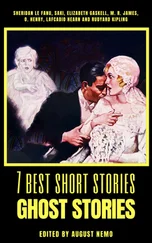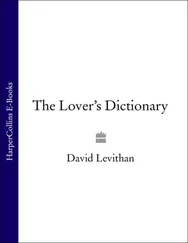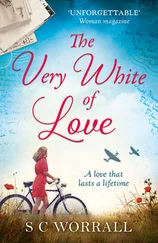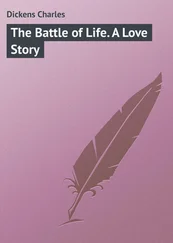During the summer Wallace was also beginning to think about fiction differently. He had always liked and read novels; he found them absorbing and relaxing and mined them for the information they provided. He had hoovered everything on his parents’ shelves, from a compilation of the underground nineteenth-century porn magazine The Pearl , a favorite, he once told a therapist, of his high school masturbations, and Fanny Hill , to popular crime novelists like Ed McBain and John D. MacDonald, to creators of literature — Updike and Kafka. Friends and relatives often tried to suggest books to him that combined his parents’ two interests. This usually meant recommending the big popular philosophical titles that were a mainstay of the era, like Zen and the Art of Motorcycle Maintenance , which, Wallace noted in a letter to Washington that summer, his mother “practically rammed…up my ass.” 6But this wasn’t the reading he was after. Instead, the first story that, as he later put it, “rang his cherries” was Donald Barthelme’s “The Balloon.” Barthelme didn’t tell straightforward stories. He sought to fracture the surface of fiction to show the underpinnings on which its illusions depended. As with other postmodernists, the point was not to make the reader forget the conventions of the charade but to see them more clearly. A truly fulfilled reader was one who always remembered he was just reading a story.
“The Balloon” is typical of Barthelme’s work. In the story, a large balloon appears over Manhattan. While it hangs above the city, various characters approach and consider it, each from his own point of view. Children jump up and down on it for fun, while adults grouse that it serves no purpose or talk about how looking at the balloon makes them feel. The police worry about the threat to public order. In the end the narrator reveals that the balloon is an artifact, something he just felt like inflating because he was lonely. This was writing that a self-described “hard-core syntax wienie” like Wallace could appreciate. It peeled back the skin of literature just as logic peeled back the skin of language. Wallace told an interviewer years later that Barthelme was the first time he heard the “click” in literature. He added that Barthelme’s sort of writing appealed to him far more than the fiction he had enjoyed in high school, writing that contented itself with telling a story. “Pretty” as Updike’s prose was, Wallace acknowledged to the interviewer, “I don’t hear the click.”
Soon another postmodern work came his way. That book was Thomas Pynchon’s The Crying of Lot 49 . Charlie McLagan, a fellow student, had turned him on to Pynchon the semester before. McLagan, who was a year behind Wallace, was different from the rest of their circle. He came from a wealthy suburban Chicago family who belonged to a country club. At Amherst he kept himself apart, rooming alone in Tyler House, a distant dorm, in a room he nicknamed “the Womb” with madras prints on the wall. His two cats were named Crime and Punishment. McLagan read widely and imaginatively, and let everyone know he had sex with his girlfriend. When Wallace and Costello would go to his dorm, the three would drink gin and tonics and eat Nutter Butter cookies and listen to U2. (Wallace was delighted to find his roommate looked like the band’s guitarist, The Edge.) But when Wallace came alone, the atmosphere was more intense: despite Wallace’s effort to stop smoking pot, he and McLagan would get high together. “God damn Charlie and his damn drug-allure,” he wrote Washington that summer. The two would sometimes even drop acid, but Wallace found he preferred mushrooms. “Don’t do LSD, and don’t do coke, because they’re both dangerous and expensive in that order,” Wallace advised Washington, but “mushrooms are fun and giggly and they make you think you’re smarter than you are…which is fun for a while.” While they tripped, Wallace and McLagan would listen over and over to “The Big Ship” by Brian Eno on McLagan’s expensive stereo. McLagan heard birth in it; Wallace thought it captured the earth in the time of the dinosaurs.
One day McLagan had run into Wallace and Costello discussing One Hundred Years of Solitude and tossed them his copy of Lot 49 , which they promptly read. The novel is the story of Oedipa Maas, a young woman trying to uncover a centuries-old conspiracy involving a secret postal organization known as Trystero. Maas travels around California encountering people who give her clues to the puzzle — or the whole action of the novel may be a hallucination or a hoax set in motion by an ex-boyfriend; the reader is left uncertain. One thing that caught Wallace’s eye about the book was the idea that to live in America was to live in a world of confusion, where meaning was refracted and distorted, especially by the media that engulf and reconfigure every gesture. As one character announces, pointing at a television, “It comes into your dreams, you know. Filthy machine.”
Lot 49 was an agile and ironic metacommentary, and the effect on Wallace cannot be overstated (so much so that in a later letter to one of his editors Wallace, ever nervous of his debt to the other writer, would lie and say he had not read the book). Wallace reading Pynchon was, remembers Costello, “like Bob Dylan finding Woody Guthrie.” One postmodernist made way for another. Barthelme was hermetic, Pynchon expansive. He tried to take in the enormity of America in a way that Barthelme did not. And he showed you that the tone and sensibility of mainstream culture— Lot 49 drew its energy from pop songs, TV shows, and thrillers — could sit alongside serious issues in fiction. At the very least, the book was funny, and Wallace already knew how to be funny. The irony of the writing was a more directed version of what he and Costello had been turning out at Sabrina .
Wallace had been free of depression since the beginning of 1982, but now, twenty months later, the black hole with teeth got hold of him again. Toward the end of an otherwise happy summer, he began to have acute anxiety attacks, perhaps brought on by a feeling of letdown after his perfect semester. His life had had the quality in the past year of using one click to drown out another. He himself in later interviews would — not entirely credibly — blame the breakdown on a sudden realization that he did not want to be a professor of logic, that he had “a kind of midlife crisis at twenty, which probably doesn’t augur real well for my longevity,” as he told an interviewer. The discipline suddenly seemed lifeless and pedantic to him; and his amazing grade point average was just an evasion, a reflection of his fear of dealing with living people as opposed to dry equations. “The same obsessive studying that helped me come alive,” he would later explain to an interviewer, “also kept me dead.” Whatever the onset of the attack, things got worse when a psychiatrist prescribed Tofranil, a tricyclic antidepressant, to help ease the anxiety.
Wallace hated the drug, which made him feel apathetic. He was preparing for the third leg of Kennick’s history of philosophy course, but now when he tried to read Wittgenstein’s Philosophical Investigations —“Uncle Ludwig” in his formulation — he couldn’t focus. Wittgenstein was a core interest of Wallace’s. His father had studied with a disciple of the Austrian philosopher, as had Kennick. For a while Wallace tried to ignore the side effects. He played tennis, went to the gym, swam “a teenyweeny bit,” “farting off,” as he wrote Washington, to whom he did not at first mention the crisis. The upset was augmented by the fact that Wittgenstein seemed to be saying what he was thinking and Pynchon writing: that experience was like a game, that people were all and ever radically disconnected. Still hopeful, he went to rejoin his classmates, only to find himself falling into deeper agony.
Читать дальше












